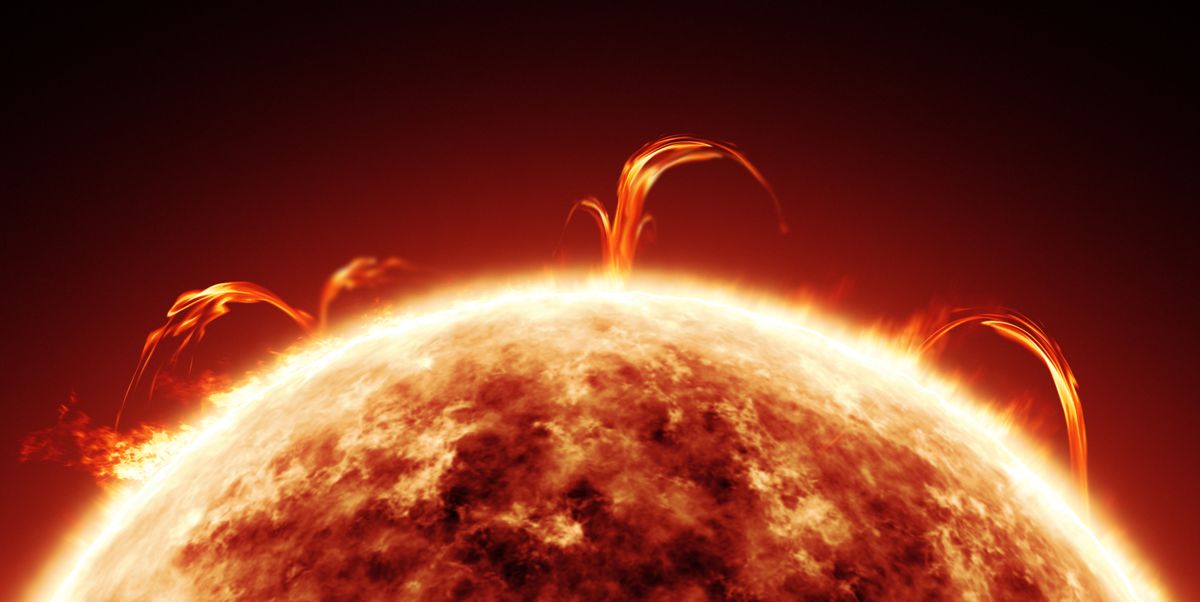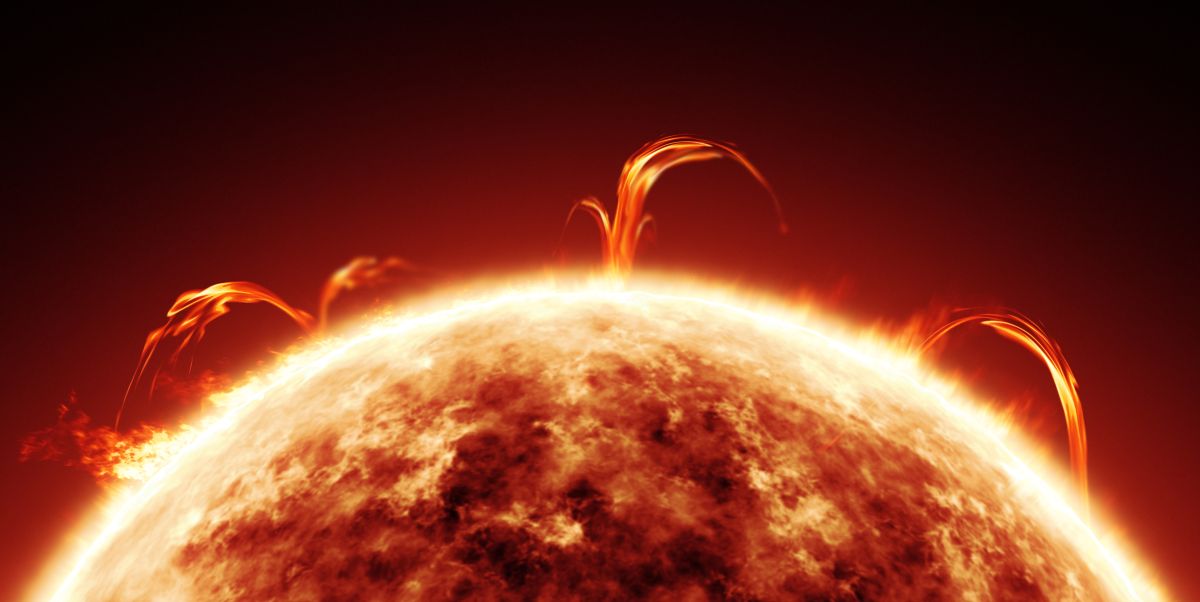
Scientists may have discovered when and how high-energy particles that bombard Earth and other objects emerge from violent environments such as the sun’s atmosphere.
These high-energy particles pose a risk to delicate satellite technology and to astronauts, and can even affect aircraft flying over the North Pole. Although researchers have been studying these particles for decades, it’s been difficult to spot a clear pattern of when flare-ups can emerge and thus to predict when they might occur.
In new research, based on simulations created with supercomputers, scientists identified the plasma in the sun‘s outer atmosphere as the source of these high-energy particles.
“This exciting new research will allow us to better predict the origin of solar energetic particles and improve forecasting models of space weather events, a key goal of NASA and other space agencies and governments around the globe,” Luca Comisso, a researcher at Columbia University and co-author of the study, said in a statement.
Related: The sun let out another flare, and the photos are stunning
The sun’s outer atmosphere, the corona, is made up of plasma, meaning the violent conditions have stripped atoms of their electrons. Solar scientists believe high-energy particles are generated in this highly turbulent sea of stripped atoms (ions) and electrons.
This has been difficult to study, however, because plasma moves erratically and unpredictably, so it’s been a mystery as to how and when high-energy particles are generated.
Comisso and Lorenzo Sironi, also of Columbia, developed simulations using supercomputers at NASA, Columbia and the National Energy Research Scientific Computing Center that modeled the exact movement of electrons and ions in the solar plasma. This created a good proxy for the corona granting the most exhaustive data yet on when and how high-energy particles form in the region.
The simulations demonstrated that magnetic fields in the corona can accelerate electrons and ions to nearly the speed of light, launching them into space.
The research helps solve a question pondered by scientists since 1949, when Enrico Fermi first began to investigate magnetic fields in space as the source of high-energy particles observed bombarding Earth’s atmosphere. Fermi’s work led physicists to suggest that the sun’s plasma could be behind many of these particles, with others pelted at Earth from deep space. But proving this hypothesis has been challenging.
While the team’s results were based on a simulation, NASA’s Parker Solar Probe could help further validate the research, Comisso said.
The Parker Solar Probe has been observing our star since the spacecraft’s launch in 2018. Part of the mission is to study the turbulent outer atmosphere of the sun. This means the Parker Solar Probe could directly observe the distribution of high-energy particles that are generated in the corona.
The results of the new work also have implications beyond the solar system. All stars are composed primarily of plasma, meaning the vast majority of matter that astronomers see is in this state of matter (which is not a gas, a liquid or a solid).
A better understanding of how plasma accelerates particles could explain high-energy particles seen not just around the sun and other stars but also around other cosmic objects, like neutron stars and black holes.
Related stories:
That opens the door to further simulations that could look at how distant stars, black holes and neutron stars generate their own high-energy particles.
“Our results center on the sun but can also be seen as a starting point to better understanding how high-energy particles are produced in more distant stars and around black holes,” Comisso said. “We’ve only scratched the surface of what supercomputer simulations can tell us about how these particles are born across the universe.”
The team’s research was published Sept. 13 in The Astrophysical Journal Letters.
Follow us on Twitter @Spacedotcom and on Facebook.



